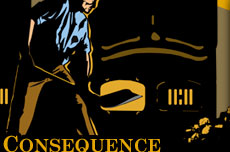The 1913-14 Michigan Copper Strike, and especially events at Italian Hall, cast a long shadow on Copper Country life. Some mineworkers left the region because of the strike. Others were drawn to manufacturing industries in larger Midwestern cities. Michigan’s significance as a national copper producer declined, particularly following the end of World War I. Yet memories of the 1913-14 strike lingered in the region and resonated through organized labor. Folk singer Woody Guthrie, for instance, recorded a song in 1941 about the Christmas Eve tragedy. Despite the Italian Hall’s importance – and in the face of conflicting public opinion – the building was torn down in 1984. A memorial park, featuring the building’s original sandstone doorway arch, was created to commemorate the site. But the demolition of Italian Hall also helped to increase interest in preserving Copper Country history through documents, museum artifacts, and the area’s countless buildings, mine sites, ethnic neighborhoods, and industrial landscapes. Preservation organizations such as the Michigan Technological University Archives and Copper Country Historical Collections, Keweenaw National Historical Park, Finlandia University’s Finnish American Historical Archive and dozens of other museum and heritage groups carefully preserve aspects of Copper Country history, including important pieces relating to the 1913-14 Michigan Copper Strike. The tumultuous strike left its mark and remains a significant topic for research and debate in the Copper Country today. |


